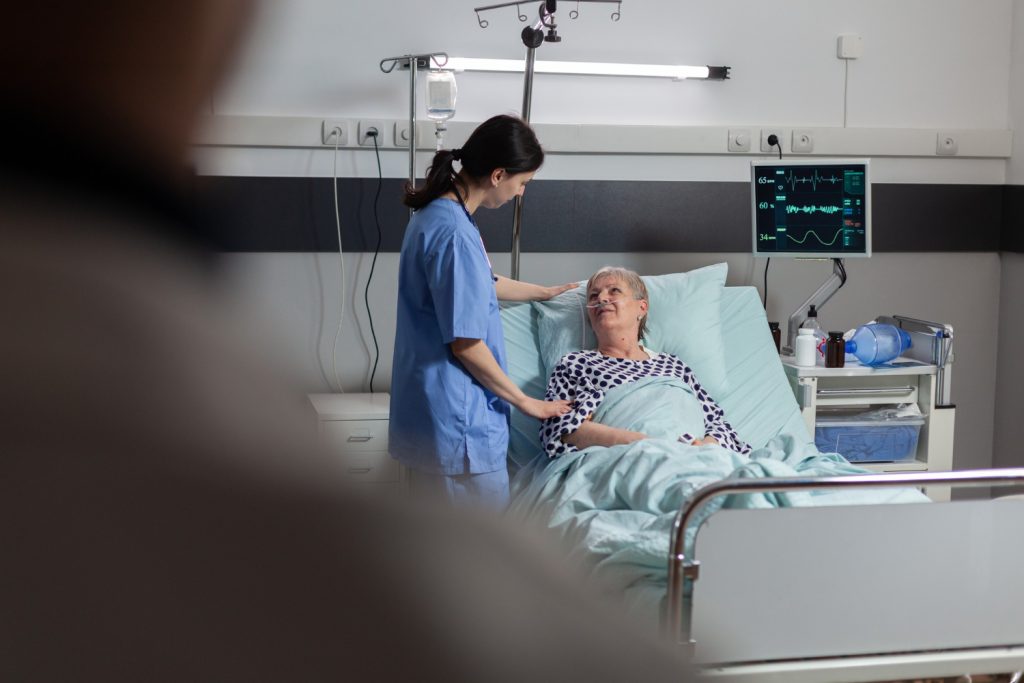Septic Shock: Causes, Management, and Complications

- Septic shock
- 01 Sep 2023
Introduction
What is Septic Shock?
When a bacterial infection in the body results in very low blood pressure and results in organ failure from sepsis, one might experience septic shock. Septic shock is a serious medical emergency. Septic shock happens when organ failure deteriorates to the point where it significantly lowers blood pressure and reduces tissue perfusion. A condition of acute circulatory failure and low blood pressure is unique to septic shock and does not improve with conventional therapies. The last and most serious stage of sepsis is septic shock with a high death rate. Amputations, post-traumatic stress disorder (PTSD), chronic pain, exhaustion, organ malfunction, and/or chronic pain are just a few of the life-altering impacts that many survivors experience.

Causes
Causes of septic shock
Most cases of septic shock are caused by:
- Microscopic organisms
- Bacterial infection
- Immune suppression
- Hospital acquired infections
- Community acquired infections
- Old-age
- Long-term illness
- Poor hygiene
- Burns and trauma
Microscopic organisms:
- Viruses and fungi like Influenza, COVID-19, and candidiasis can cause a serious immune reaction and sepsis.
Bacterial infections:
- Sepsis can be caused by Staphylococcus, Streptococcus, Escherichia coli (E. coli), Pseudomonas etc.
- Infections can come from cuts, urinary tract infections, asthma, or medical devices.
Immune suppression:
- People with weak immune systems, like those who are getting chemotherapy, taking immunosuppressive drugs, or have HIV/AIDS, are more likely to get septic shock. 1Causes | Researched based study from National Library of Medicine
Hospital acquired infections:
- Patients in hospitals, especially those in intensive care units or on ventilators, are more likely to get sepsis and septic shock because they are exposed to invasive medical devices and drug-resistant germs.
Community acquired infections:
- Septic shock can also be caused by infections picked up in a community.
- These infections could be skin infections, infections of the urinary tract, or infections of the lungs.
Old age:
- People who are very young or very old are more likely to get illnesses and result in septic shock.
Long-term illnesses:
- Diabetes, chronic kidney disease, liver disease, and heart disease can all weaken a person’s immune system.
Poor hygiene:
- Poor cleanliness, especially in medical situations, can make it easier for infections to spread and septic shock to happen.
Burns and Trauma:
- Burns and serious injuries can break down the protective layer of the skin, making it easier for germs to get in and increase the risk of illness.
Symptoms

Signs and Symptoms of Septic Shock
So, when a person first shows signs of sepsis, they show changes in the following vital signs:
- Fever or chills
- Rapid Heart rate
- Rapid Breathing rate
- Low blood pressure
- Decreased urine output
- Cold and clammy skin
- Pale skin
- Yellowing of skin and eyes
Severe sepsis is when you have sepsis and the end organs don’t work right. At this point, some signs and symptoms could be:
- Changed state of mind
- Decreased urine output 1Symptoms | Researched based study from National Library of Medicine
- Weak pulse
- Lack of oxygen
- Bluish discoloration of the skin
Risk Factors
Risk factors for Septic Shock
People with a weak immune system like the following are likely to get sepsis and septic shock.
- Newborns
- People older than 65
- People who use drugs
- Pregnant women
- People who have had joints or heart valves replaced
People with long-term health problems like the following are prone to sepsis.
- AIDS
- Type 2 diabetes
- Leukemia
- Lymphoma
- Immunosuppressed patients
- People who have had illnesses, surgeries, or medical devices like a ventilator put in recently are also more likely to get sepsis.
Diagnosis
Diagnosis of septic shock
Physical Examination:
- The doctor will do a full physical exam, looking for signs like low blood pressure, a fast heart rate, a change in mental state, and redness, swelling, or warmth at the site of an infection.
Laboratory Tests:
Different blood tests are done to figure out how sick a person is. Some of these are:
- Complete blood count.
- Blood cultures to find out causative organism
- Lactic Acid levels in blood
Imaging:
- X-rays, CT scans, or ultrasounds might be used to find the cause of an illness (like asthma, a urinary tract infection, etc.) or to check on the health of the organs that are affected.
Management
Management of Septic Shocks
Antibiotics:
- Broad-spectrum antibiotic administration is a vital part in treating septic shock.
- Antibiotics are modified to target the infection more accurately after the identification of bacteria.
Fluid resuscitation:
- To replenish blood volume, intravenous fluids are administered.
Vasopressors:
- Even after fluid resuscitation, the blood pressure may sometimes stay low and vasopressor drugs are given that raise blood pressure.
Source Control:
- It’s essential to locate and eliminate the infection’s source.
- This may include treating the main infection site (such as removing a contaminated catheter), draining abscesses, removing diseased tissues, or any combination of these.
Oxygen supply:
- Oxygen, delivered by a mask, nasal cannula, or a ventilator, may assist increase blood oxygen levels.
Nutrition:
- Patients with sepsis have a fast metabolism, so they shouldn’t go without food for a long time.
Supportive treatment:
- Supportive treatment might include cardiac function monitoring, renal replacement treatment, and mechanical ventilation for breathing support.
Corticosteroids:
- If the blood pressure is still difficult to control with existing therapies, corticosteroids are used.
Prevention
Prevention of Septic Shock
Weak immune systems can’t fight infections. To detect and treat symptoms early, patients should follow these steps:
- Get Vaccinated and maintain good hygiene.
- Clean and disinfect wounds as soon as possible to avoid further infections.
- Avoid smoking.
- Pneumococcal vaccine is indicated for people over 60 years and those with chronic conditions. 2Prevention| Researched based study from National Library of Medicine
- Maintain oximetry oxygen saturation at 90%.
- If your doctor prescribes antibiotics, complete the full course even if you feel better, to prevent bacteria from becoming resistant.
- Regularly drink water to stay hydrated.
- Avoid bladder infections like Urinary tract infections by adopting sterile methods.
Complications
Complications of septic shock
- Organ failure or dysfunction
- Acute respiratory distress syndrome (ARDS)
- Acute kidney injury
- Heart failure
- Tissue death (gangrene)
- Seizures
- Cellulitis
- Amputation
- Post Sepsis Syndrome
- Death
To improve results and lower the risk of problems, septic shock needs to be caught early and treated quickly.
What is Post sepsis syndrome?
According to studies, post-sepsis syndrome (PSS), which may be moderate or severe, affects up to 50% of sepsis survivors. PSS symptoms may include: 3 Post sepsis syndrome | Researched based study from Sepsis
- Insomnia
- Long lasting pains and aches
- Chronic tiredness
- Hair fall
- Memory problems
- Infections
Outlook
Outlook
What is the length of time sepsis lasts?
- The death rate was 59% in 6 months after the diagnosis, and it was 74% in 48 months after the diagnosis. 4Outlook | Researched based study from National Library of Medicine
- Age, cause of sepsis, diabetes, cardiovascular disease, length of stay in the intensive care unit, were all linked to a shorter chance of survival.
Take away
Take away
Sepsis is a medical emergency that needs to be diagnosed and treated quickly, just like a stroke or a heart attack. Sepsis kills and disables millions of people and needs to be caught early and treated quickly to save lives. For every hour that treatment is delayed, the chance of sepsis getting worse and turning into serious sepsis or septic shock, which can kill people. Sepsis causes 1/3 of the patients to die globally. 5Take away | Researched based study from World Health Organization
Any feedback on this article?
 This Articles content was accurate
This Articles content was accurate Very Informative Article
Very Informative Article I have a question or a comment
I have a question or a comment
 This article contains inaccurate content
This article contains inaccurate content This article was not helpful
This article was not helpful I have a question or a comment
I have a question or a comment
We appreciate your helpful feedback!
Checkout our social pages
References
-
National Library of Medicine
Causes | Symptoms
-
National Library of Medicine
Prevention
-
Sepsis
Post Sepsis Syndrome
-
National Library of Medicine
Outlook
-
World Health Organization
Takeaway





































